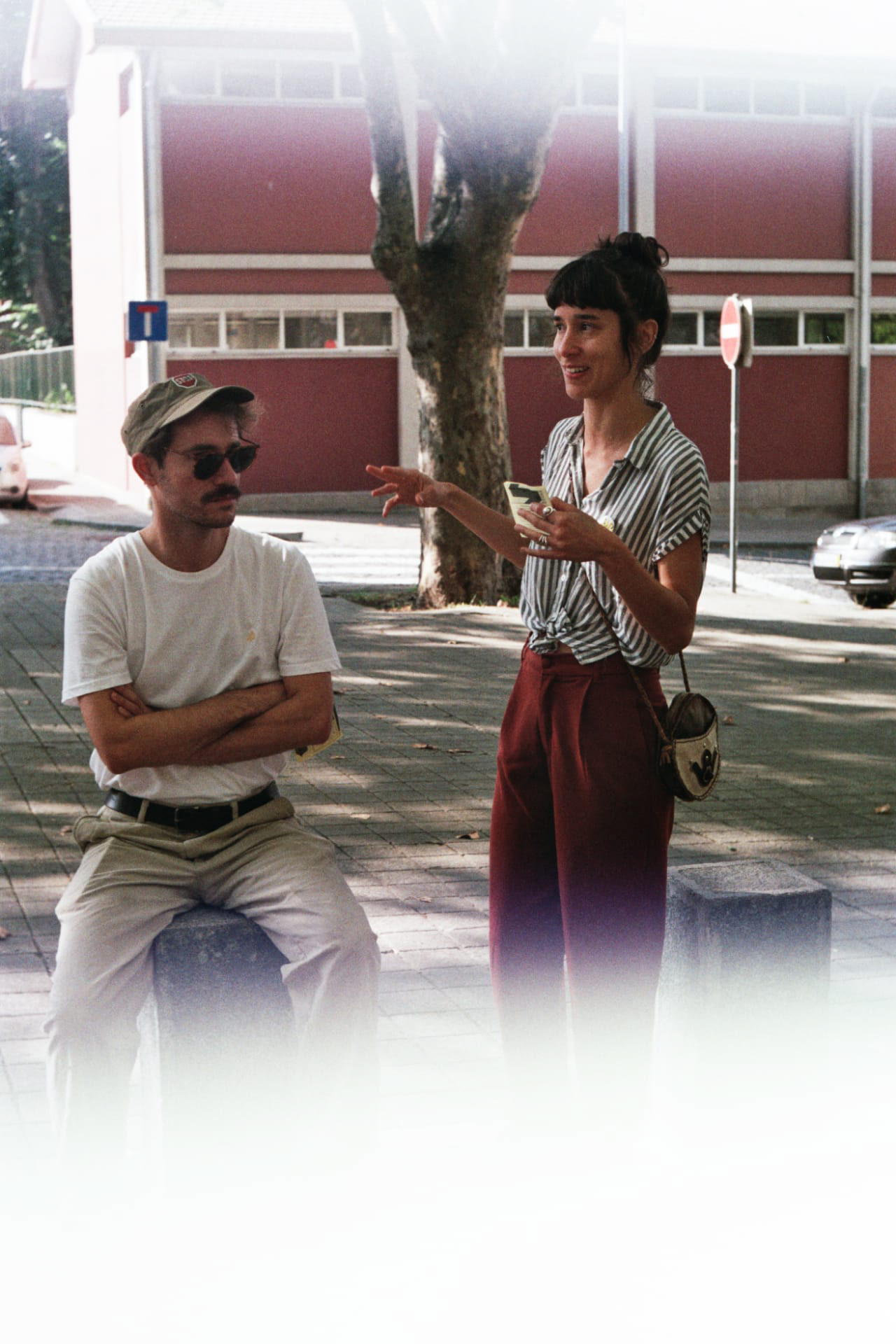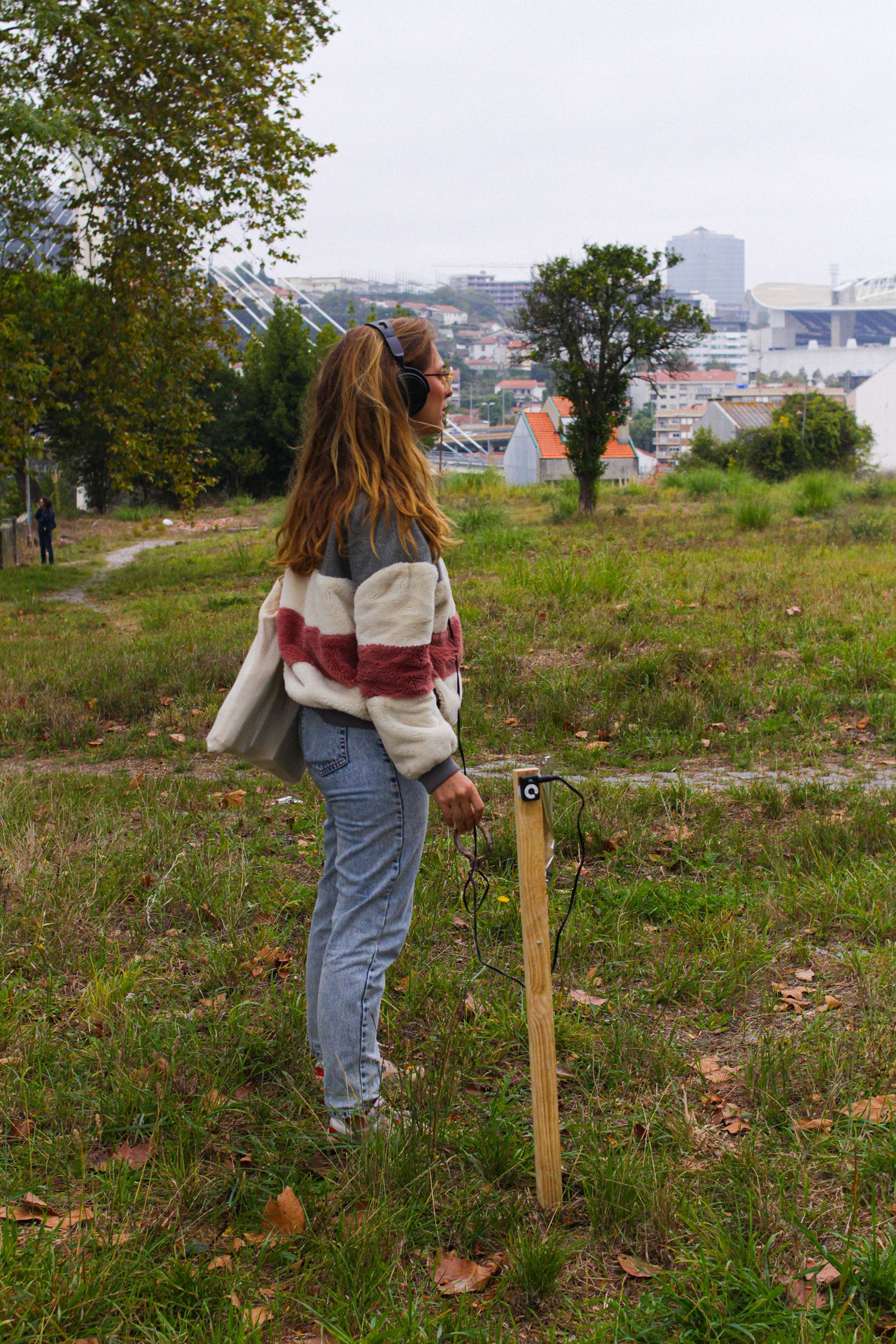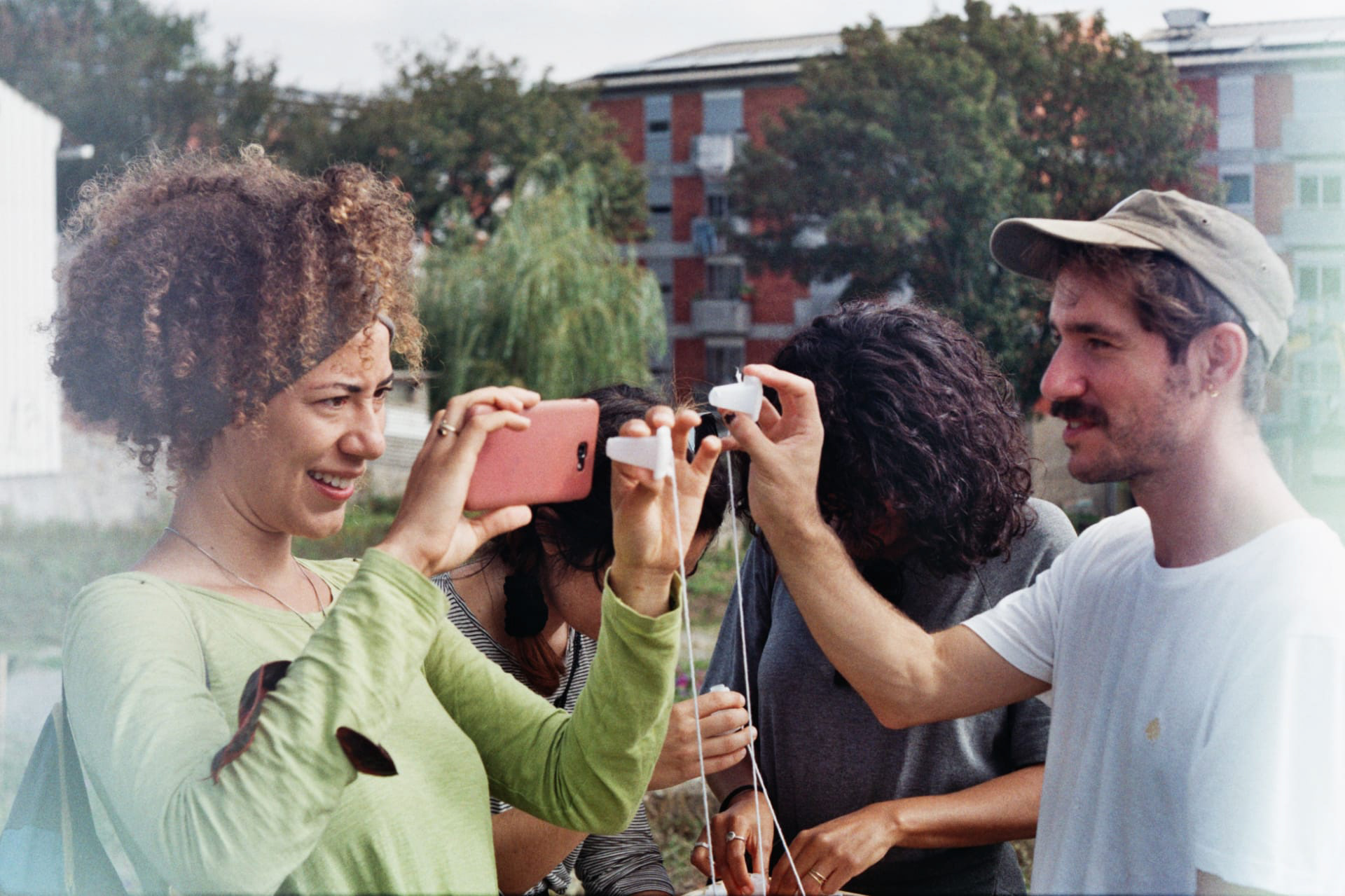Archeology of the Void (Porto/PT, 2019)
A walk mediated by sound and image presented in the program The (mis)guided Tours, a satellite project of the Porto Design Biennale 2019.
A walk mediated by sound and image presented in the program The (mis)guided Tours, a satellite project of the Porto Design Biennale 2019.
The São Vicente de Paulo neighborhood was a public housing complex located in the parish of Campanhã in Oporto. It was built at the end of the 1940s on a previously uncultivated plot of land. One of the city's oldest social housing estates, it was mainly built to accommodate people displaced from precarious housing in the city center. Despite the residents' resistance, the houses that comprised the neighborhood were demolished in phases between 2005 and 2008. The reasons for the demolition were allegedly the high level of disrepair and the lack of security in the area. People who had lived there all their lives were relocated to different public housing projects around the city, most of which were far from their original area. To this day, the demolition is questioned by some of the former residents, as the destruction was carried out even though there was no plan for the area. Around thirteen years after the demolition process began, the site still stands empty.
The wasteland where the neighborhood used to be is now an empty space of around 2.8 hectares with panoramic views of the surroundings and the River Douro. From its many plateaus, it is possible to see some of the main landmarks of the parish of Campanhã. These include the Estádio do Dragão, Av. 25 de Abril, the train station, and the Old Municipal Slaughterhouse. The latter two are already in line for major redevelopment projects over the next few years. Nearby rehabilitation works and these planned large-scale investments near the site indicate that it won't be long before it is redeveloped as well.


Archaeology of the Void is a walk through a vacant plot located in the eastern part of Porto, where the São Vicente de Paulo neighborhood used to be before its demolition over a decade ago. I propose that this empty terrain on the edge of Porto offers a privileged viewpoint from which to understand some of the urbanization dynamics that have governed the city's transformations, especially in its eastern area. The Archaeology of the Void tour seeks to focus on the wasteland while it still exists and to present it to the visitor based on perceived characteristics of the space and its movements of occupation and de-occupation. The journey is marked by sonic, spatial, and imagetic notes that visitors encounter as they walk through the terrain. By conceiving the space as a kind of archive, the ground is excavated to uncover traces and latent tensions in the place's history, highlighting past transformations, future expectations, and active dynamics in the present.







Photos by Maria Kemmer (2 a 9; 9; 11 a 15), Orlando Vieira Francisco (1) and Flora Paim (10)
The "Archeology of the void" walk was also presented in a shorter version in the ERRE Bonjoia program, a proposal to activate the Bonjoia territory (Campanhã/Porto) designed by Diogo Martins and João Melo for CRL - Central Elétrica in October 2021.




Photos by Thiago Liberdade & Inês Costa
TECHNICAL INFORMATION
Created by
Flora Paim
Flora Paim
Executive Production
Flora Paim e Laurem Crossetti (The (mis)guided Tours)
Production support The (mis)guided Tours
Isabeli Santiago e Alícia Medeiros
Flora Paim e Laurem Crossetti (The (mis)guided Tours)
Production support The (mis)guided Tours
Isabeli Santiago e Alícia Medeiros
Flora Paim e Miguel Vale
Graphic Designer The (mis)guided Tours
Beatriz Alcantara
Documentation (photo & vídeo) The (mis)guided Tours
Maria Paula Kemmer
Coletivo MAAD
Ângelo Coelho
João Moura
Joana Braga
Lis Paim
Leonor Parda
Miguel Vale
Kauê Gindri
Renato Machado
Sara Goulart
Sr. Carlos (Rancho Folclórico Danças e Cantares de Campanhã